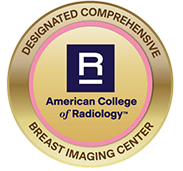Study concludes 3D mammography enables doctors to detect 40% more invasive cancers over traditional 2D mammography
As reported in a January 9, 2013 Press Release by Hologic:
The Oslo Breast Cancer Screening Trial Concludes that the Use of 3D Mammography in Combination with a 2D Breast Exam Finds Significantly More Cancers than a 2D Breast Exam Alone
First large-scale, peer-reviewed prospective clinical study shows that adding 3D mammography to a 2D breast screening exam enables doctors to detect 40% more invasive cancers while also reducing false positives
BEDFORD, Mass., Jan. 9, 2013 /PRNewswire/ — Hologic, Inc. (Hologic or the Company) (NASDAQ: HOLX), a leading developer, manufacturer and supplier of premium diagnostics, medical imaging systems and surgical products dedicated to serving the healthcare needs of women, today announced that a groundbreaking new study published in Radiology, the Radiological Society of North America scientific journal, found that the addition of three dimensional (3D) mammography (breast tomosynthesis) screening technology to a 2D breast screening exam significantly increased cancer detection while reducing the number of false positives.
The study, “Comparison of Digital Mammography Alone and Digital Mammography plus Tomosynthesis in a Population-based Screening Program,” was led by Per Skaane, M.D., Ph.D. of Oslo University Hospital Ullevaal. The study was based on 12,631 screening examinations in a large hospital in Norway.
The researchers using Hologic’s 3D mammography technology in combination with a 2D mammogram found a significant increase in cancer detection rates, particularly for invasive cancers, and a simultaneous decrease in false-positive rates compared with 2D mammography alone. Significant findings include:
- A 40% increase in the detection of invasive breast cancers
- A 27% increase in the detection of all cancers (invasive and in situ cancers combined)
- A 15% decrease in false-positive rates
The authors reported that the increase in cancer detection was found across all breast tissue densities, from dense to fatty. At the same time, there was no increase in the detection of ductal carcinoma in situ (DCIS), which is non-invasive and cited by critics of mammography screening as potentially being over-diagnosed.
As a result of the large increase in the detection of invasive cancers rather than in situ cancers the authors of the paper state, “Perhaps our most important observation is that with the mammography-plus-tomosynthesis arm, the actual benefit, in terms of possibly improving outcome owing to earlier detection, may be larger than merely the difference in the total count or number of detected cancers.”
Rob Cascella, Hologic’s President and Chief Executive Officer said, “A number of major papers demonstrating the value of 3D mammography have been published in the last few months. The Oslo trial is the first large-scale prospective study to show the additional cancers found with 3D mammography in combination with 2D mammography were invasive cancers—the very type of cancers we want to detect and treat early. 3D mammography is the best breast screening technology to date in that it finds significantly more invasive cancers while also reducing false positives. Most other imaging technologies for screening require users to compromise specificity (recall rate) for sensitivity (cancer detection). We believe the value of 3D mammography in breast cancer screening is most compelling.”
3D mammography was approved for clinical use for breast cancer screening and diagnosis in the U.S. in February, 2011 and has been available in countries recognizing the CE mark since 2008. Hologic’s 3D mammography technology is in use in 47 states and 30 countries outside the U.S. Unlike a screening 2D digital mammogram, which involves a single X-ray image of the breast, 3D mammography captures multiple, low-dose images from multiple angles around the breast. The images are then used to produce a 3D reconstruction of the breast.
Dr. Per Skaane and his research team in Oslo are well known for their research. Their Oslo I and Oslo II trials were important studies comparing 2D digital mammography to screen-film for the detection of breast cancer.

